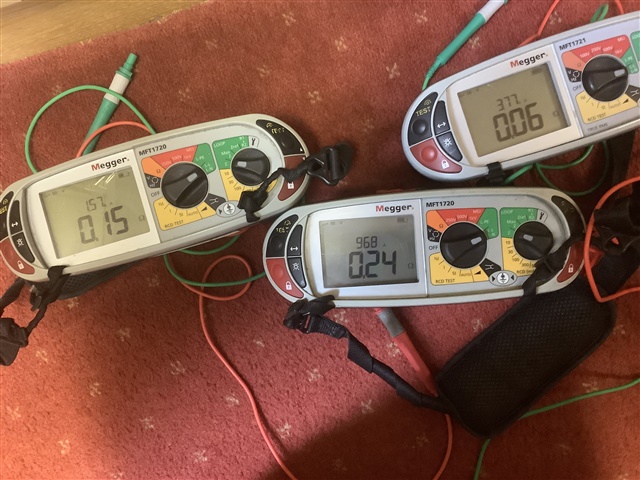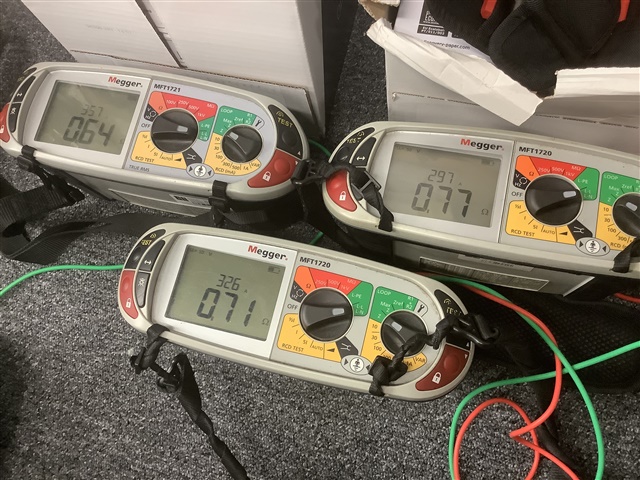Not sure what to record! 
All calibrated around the same time. Three readings taken on each instrument with swapped leads and probes all fairly consistent with photo.
Then move to a socket opened up using same leads;

Now swap the leads about, perhaps taking a moment to give a bit of polish with a cotton bud or similar.
Quite often kit is calibrated with a different set of leads.
If the results are varying due to less than perfect contact, there is an argument for using the lowest.
Equally for sizing ADS, assume the highest.
Your second batch of readings (0.64- 0.77 ) are quite tightly bunched - within 10 % of the mean value.
The caution here is that with a machine that is not circulating much current (to avoid firing an RCD) it is measuring (or trying to measure) very small changes in voltage in response to the internal load being keyed on and off.
A very thin layer of oxide is all that it takes to add a few tens of milli-ohms.
Mike.
Now swap the leads about, perhaps taking a moment to give a bit of polish with a cotton bud or similar.
Quite often kit is calibrated with a different set of leads.
If the results are varying due to less than perfect contact, there is an argument for using the lowest.
Equally for sizing ADS, assume the highest.
Your second batch of readings (0.64- 0.77 ) are quite tightly bunched - within 10 % of the mean value.
The caution here is that with a machine that is not circulating much current (to avoid firing an RCD) it is measuring (or trying to measure) very small changes in voltage in response to the internal load being keyed on and off.
A very thin layer of oxide is all that it takes to add a few tens of milli-ohms.
Mike.
We're about to take you to the IET registration website. Don't worry though, you'll be sent straight back to the community after completing the registration.
Continue to the IET registration site